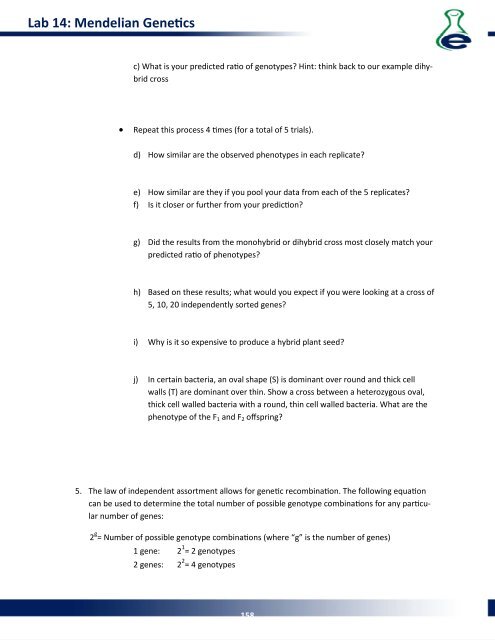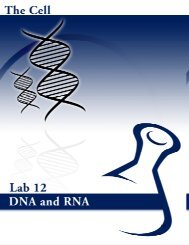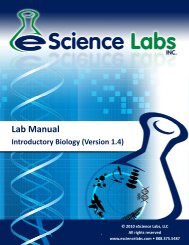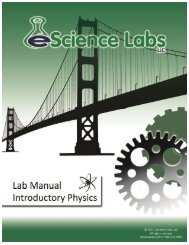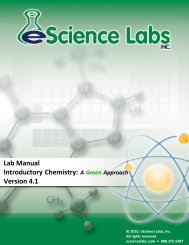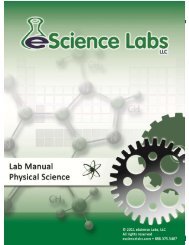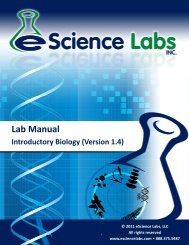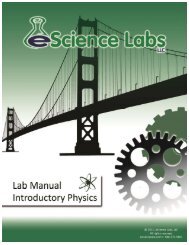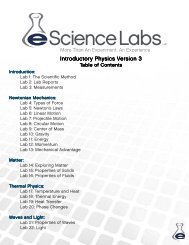Lab Manual - eScience Labs
Lab Manual - eScience Labs
Lab Manual - eScience Labs
You also want an ePaper? Increase the reach of your titles
YUMPU automatically turns print PDFs into web optimized ePapers that Google loves.
<strong>Lab</strong> 14: Mendelian Genecs<br />
c) What is your predicted rao of genotypes? Hint: think back to our example dihybrid<br />
cross<br />
• Repeat this process 4 mes (for a total of 5 trials).<br />
d) How similar are the observed phenotypes in each replicate?<br />
e) How similar are they if you pool your data from each of the 5 replicates?<br />
f) Is it closer or further from your predicon?<br />
g) Did the results from the monohybrid or dihybrid cross most closely match your<br />
predicted rao of phenotypes?<br />
h) Based on these results; what would you expect if you were looking at a cross of<br />
5, 10, 20 independently sorted genes?<br />
i) Why is it so expensive to produce a hybrid plant seed?<br />
j) In certain bacteria, an oval shape (S) is dominant over round and thick cell<br />
walls (T) are dominant over thin. Show a cross between a heterozygous oval,<br />
thick cell walled bacteria with a round, thin cell walled bacteria. What are the<br />
phenotype of the F 1 and F 2 offspring?<br />
5. The law of independent assortment allows for genec recombinaon. The following equaon<br />
can be used to determine the total number of possible genotype combinaons for any parcular<br />
number of genes:<br />
2 g = Number of possible genotype combinaons (where “g” is the number of genes)<br />
1 gene: 2 1 = 2 genotypes<br />
2 genes: 2 2 = 4 genotypes<br />
158


